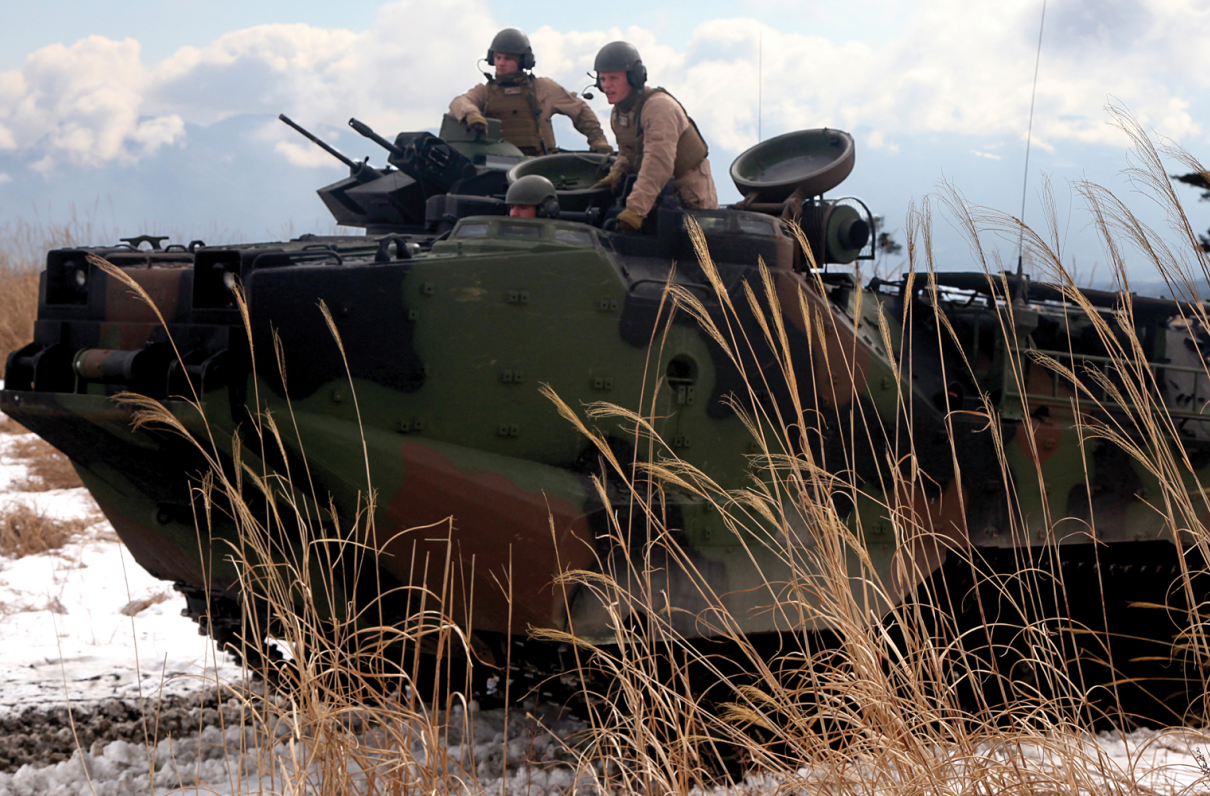This article by Gina Harkins originally appeared on Military.com, the premier resource for the military and veteran community.
The Marine Corps will shut down its unique battalion-sized combat-assault unit this week after decades of service, from supporting Pacific campaigns during World War II to exercises with allies to wartime deployments to Korea, Vietnam and the Middle East.
Combat Assault Battalion, based in Okinawa, Japan, will case its colors Friday. It marks the end of a 76-year history during which engineers, amphibious assault vehicle crews and light-armored reconnaissance units worked side-by-side to support 3rd Marine Division.
" 'Sui Generis' is the motto of the unit, which means unique or of its own kind," Lt. Col. Jacob Robinson, CAB's final commanding officer, told Military.com. "I think that really is the essence of the legacy. It's always been a fairly diverse unit and has had significant capabilities dating back to 1942."
The decision to deactivate the unit is the result of Marine Corps Force 2025, a years-long review that determines where the service needs to boost or shrink capabilities in an effort to remain relevant in the future fight. Deactivating Combat Assault Battalion, Robinson said, helps the service save manpower, realign existing capabilities and open up the opportunity to add new ones.
Almost all of the nearly 1,000 Marines who were assigned to the unit as of last summer have already been reassigned. It took about a year for the bulk of the personnel to transition out or be moved, as leaders tried not to disrupt the lives of Marines and their families who'd traveled all the way to Japan to serve with Combat Assault Battalion.
The AAV and LAV personnel and equipment made for the cleanest transition, Robinson said, since they moved in whole to 4th Marine Regiment, also on Okinawa. Some of the combat engineers also stayed in Japan, while others moved to Hawaii or were absorbed by I or II Marine Expeditionary Force units on the East and West coasts.
CAB's deactivation is a bittersweet one for Robinson, who said it was an honor to serve as battalion commander for Marines carrying out such diverse missions. The Marines had a chance to operate in a forward-deployed environment alongside allies all over the world, he said.
And since the unit has long roots in armor -- first with tank crews and later amphibious assault vehicles and light-armored vehicles -- the battalion's combat engineers, LAV teams and AAV crews have gotten a rare chance to work closely together.
"Nowhere else do you have all those same capabilities working in the same unit," Robinson said. "... It's been a real opportunity for those Marines to be able to experience the other [military occupational specialties] in a way they don't generally get the opportunity to do so."
CAB's deactivation ceremony will be held Friday afternoon at the Camp Courtney Theater. Brig. Gen. William Jurney, commanding general of 3rd Marine Division, is scheduled to preside over the deactivation.
The Marines who've served in Combat Assault Battalion -- from World War II through the present -- will carry those experiences forward, Robinson added.
"I think the legacy is, for a long time from now, I think you will be able to go to a unit and you'll be able to find Marines who served in Combat Assault Battalion," he said. "... That's the case dating all the way back to World War II, under whatever name this unit was called. The legacy is their contribution to the betterment of the Marine Corps -- not only while they were in this unit, but just as importantly as they served with other units."
Other articles by Military.com:
6 EOD Soldiers Awarded 11 Medals for Actions in Afghanistan
One-Third of Youths Too Obese for Military Service, Study Finds
World War II Explosive Discovered Being Used as Garden Decoration
